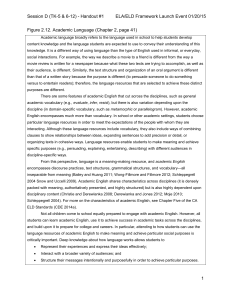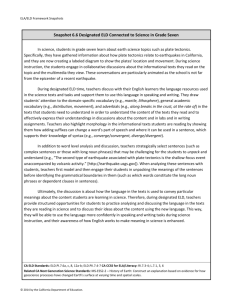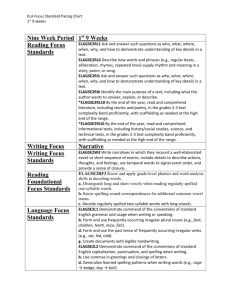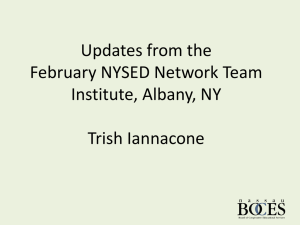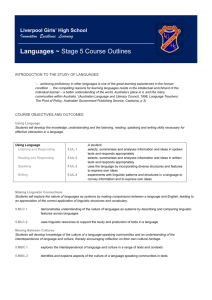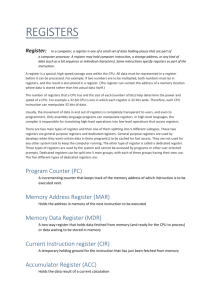Integrated and Designated ELD Handout 1of1
advertisement
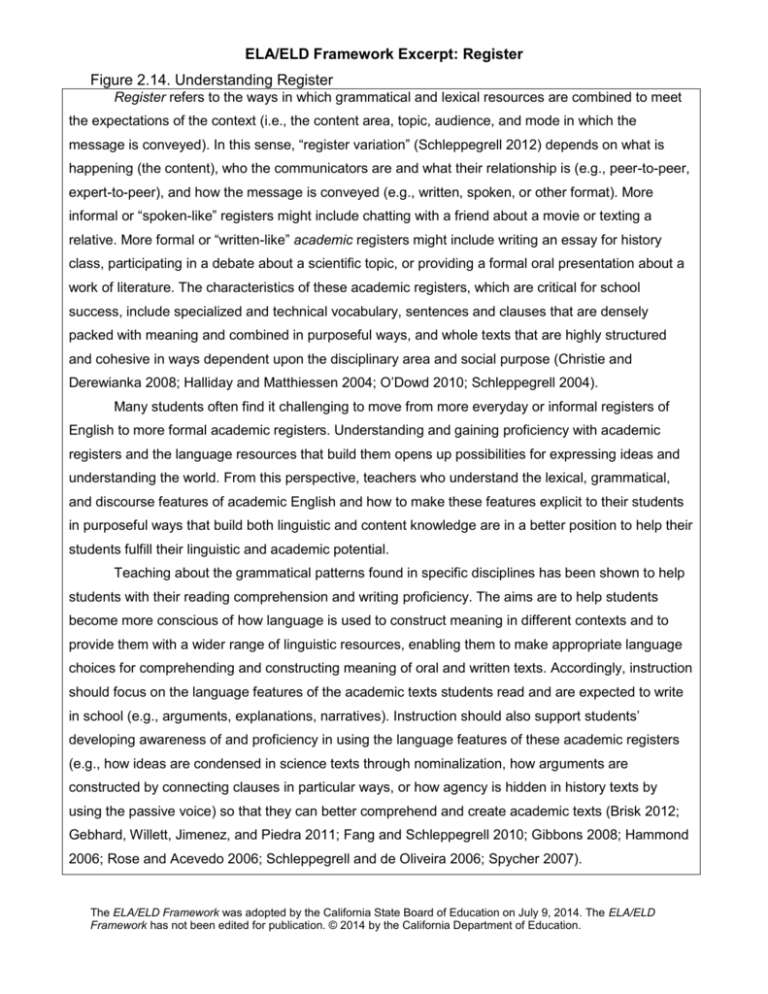
ELA/ELD Framework Excerpt: Register Figure 2.14. Understanding Register Register refers to the ways in which grammatical and lexical resources are combined to meet the expectations of the context (i.e., the content area, topic, audience, and mode in which the message is conveyed). In this sense, “register variation” (Schleppegrell 2012) depends on what is happening (the content), who the communicators are and what their relationship is (e.g., peer-to-peer, expert-to-peer), and how the message is conveyed (e.g., written, spoken, or other format). More informal or “spoken-like” registers might include chatting with a friend about a movie or texting a relative. More formal or “written-like” academic registers might include writing an essay for history class, participating in a debate about a scientific topic, or providing a formal oral presentation about a work of literature. The characteristics of these academic registers, which are critical for school success, include specialized and technical vocabulary, sentences and clauses that are densely packed with meaning and combined in purposeful ways, and whole texts that are highly structured and cohesive in ways dependent upon the disciplinary area and social purpose (Christie and Derewianka 2008; Halliday and Matthiessen 2004; O’Dowd 2010; Schleppegrell 2004). Many students often find it challenging to move from more everyday or informal registers of English to more formal academic registers. Understanding and gaining proficiency with academic registers and the language resources that build them opens up possibilities for expressing ideas and understanding the world. From this perspective, teachers who understand the lexical, grammatical, and discourse features of academic English and how to make these features explicit to their students in purposeful ways that build both linguistic and content knowledge are in a better position to help their students fulfill their linguistic and academic potential. Teaching about the grammatical patterns found in specific disciplines has been shown to help students with their reading comprehension and writing proficiency. The aims are to help students become more conscious of how language is used to construct meaning in different contexts and to provide them with a wider range of linguistic resources, enabling them to make appropriate language choices for comprehending and constructing meaning of oral and written texts. Accordingly, instruction should focus on the language features of the academic texts students read and are expected to write in school (e.g., arguments, explanations, narratives). Instruction should also support students’ developing awareness of and proficiency in using the language features of these academic registers (e.g., how ideas are condensed in science texts through nominalization, how arguments are constructed by connecting clauses in particular ways, or how agency is hidden in history texts by using the passive voice) so that they can better comprehend and create academic texts (Brisk 2012; Gebhard, Willett, Jimenez, and Piedra 2011; Fang and Schleppegrell 2010; Gibbons 2008; Hammond 2006; Rose and Acevedo 2006; Schleppegrell and de Oliveira 2006; Spycher 2007). The ELA/ELD Framework was adopted by the California State Board of Education on July 9, 2014. The ELA/ELD Framework has not been edited for publication. © 2014 by the California Department of Education.
